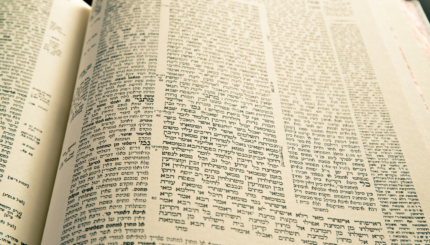The story of Esther teaches us many things, amongst them, that timing is everything.
This year, the women’s Megillat Esther reading in Sydney, Australia marks its fifteenth year! We began in a private home with about thirty women. As the years went on and our numbers grew, we read the Megillah each year in various communal halls in Sydney. In 2013, for the very first time, we held our women’s Megillah reading in the main sanctuary of a Modern Orthodox synagogue! Over 25 women read from the Megillah for a total of 110 women in attendance.
This year we will have more women reading than ever before and, please God, a record number of women attending in celebration.
What can we, a group of women who have been gathering to read the Megillah for fifteen years, learn from the story of Esther? When we are looking for Hashem’s hand in Jewish history, we must take a long-term perspective.
The story of Esther seems like an unlikely, outrageous chain of events that follow one after another. During the course of the hour-long reading, the Jews go from the verge of annihilation to miraculous redemption. The events seem to occur in immediate succession, but actually Achashverosh ascended the throne a full twelve years before Mordechai and Esther step up and consolidate their political power.
In our twelfth year of reading Megillah – our “Bat Mitzvah” year – we gathered in a hall at the oldest and largest Modern Orthodox Jewish Day School in Sydney. It took some discussion, but we successfully gained permission from the rabbi of the school to hold the reading on the premises.
A young woman’s Bat Mitzvah is the point in her life when she enters adulthood and assumes responsibility for her own spirituality. As a consequence, the community takes her seriously. And so it was with our women’s Megillah reading. Our Bat Mitzvah year was a turning point – it was the year that the mainstream Orthodox community began to “take us seriously.”
We were excited to be in this new phase. Since then, we have gone from strength to strength. In year thirteen, we held two readings: The first was in the Jewish Day School, at which some of the readers were students of the school and the attendees included female students and teachers. For many women, this was the first time they had even heard of a women’s Megillah reading. The second reading that morning was held in the hall of a Modern Orthodox synagogue. Last year, we read the Megillah inside the sanctuary of that same synagogue. We are grateful to be meeting in the main sanctuary again this year.
We have followed the example of Queen Esther in working with some of the Modern Orthodox rabbis in our city: we ask for what we want, respectfully, assertively, and persistently. In this way, we have been able to grow and inspire more women to become involved.
A women’s Megillah reading celebrates Jewish women as the source of redemption and continuity. We hope that through our reading we can pass on to our daughters and to the next generation, our passion and enthusiasm for the story of Esther, our enhanced connection with the festival of and the text of the Megillah and our love for and commitment to Judaism.
Like this post? Join the conversation through MyJewishLearning’s weekly blogs newsletter.



